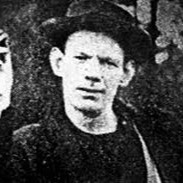
1935 - 1961
Robert Andrew McGladdery
Summary
Name:
Robert Andrew McGladderyYears Active:
1961Birth:
October 18, 1935Status:
ExecutedClass:
MurdererVictims:
1Method:
Bludgeoning / Strangulation / StabbingDeath:
December 20, 1961Nationality:
United Kingdom
1935 - 1961
Robert Andrew McGladdery
Summary: Murderer
Name:
Robert Andrew McGladderyStatus:
ExecutedVictims:
1Method:
Bludgeoning / Strangulation / StabbingNationality:
United KingdomBirth:
October 18, 1935Death:
December 20, 1961Years Active:
1961Date Convicted:
October 16, 1961bio
Robert Andrew McGladdery was born on 18 October 1935 in Northern Ireland. Very little has been publicly recorded about his early life, family background, or upbringing. However, it's known that he lived in the vicinity of Newry, County Down. By his mid-20s, McGladdery was known to frequent social events in the area, including local dances, common recreational gatherings for young people at the time. His name was not known to law enforcement prior to the murder, and he had no significant criminal record.
McGladdery and Pearl Gamble were reportedly distant cousins, a detail that only added to the tragic complexity of the case. The connection, while not particularly close in terms of familial bonds, made the murder all the more shocking to those in the community. McGladdery's demeanor was described by some as quiet, ordinary, and even polite.
murder story
On the night of 28 January 1961, 19-year-old Pearl Gamble attended a dance at the Henry Thomson Memorial Orange Hall in Newry with three of her girlfriends. The dance hall was a popular venue for young people in the area. That night, she was seen dancing both with her boyfriend and with Robert McGladdery.
Sometime after leaving the dance, Pearl vanished. Her body was discovered the next day, 29 January 1961, at Upper Damolly, a rural area near Newry. She had been bludgeoned, strangled, and stabbed to death, a violent and brutal killing that stunned the local community.
Initially, McGladdery told investigators that he had worn a dark blue suit to the dance. However, multiple witnesses recalled seeing him in a light-colored suit, casting immediate suspicion on his statements. Detectives kept him under close surveillance. On 10 February 1961, police discreetly observed him sneaking into a patch of undergrowth. The next day, they returned to the area and found a pillowcase hidden in a septic tank, containing a bloodstained overcoat, waistcoat, and handkerchief, evidence that strongly tied him to the murder.
He was arrested on 11 February 1961, charged with the murder, and held in custody. At trial, held in Downpatrick in October, McGladdery pleaded not guilty and maintained his innocence throughout the proceedings. Despite his claims, the jury found the evidence overwhelming, and on 16 October 1961, he was convicted of murder and sentenced to death.
The case drew massive public interest, especially as it became clear McGladdery could be the last person executed in Northern Ireland. On the night before his execution, it was later reported that he confessed to the murder. Whether that confession was officially recorded or merely a verbal statement to clergy or guards remains unclear in historical records.
On 20 December 1961, at the age of 26, Robert McGladdery was hanged at Crumlin Road Gaol in Belfast, with executioner Harry Allen presiding.